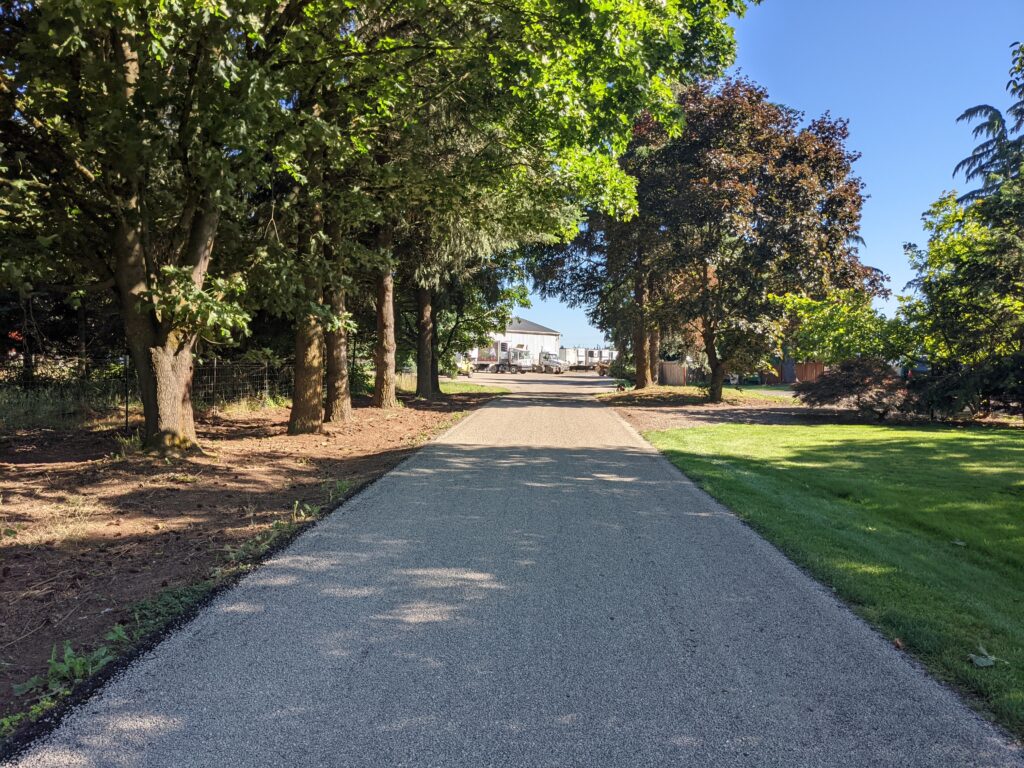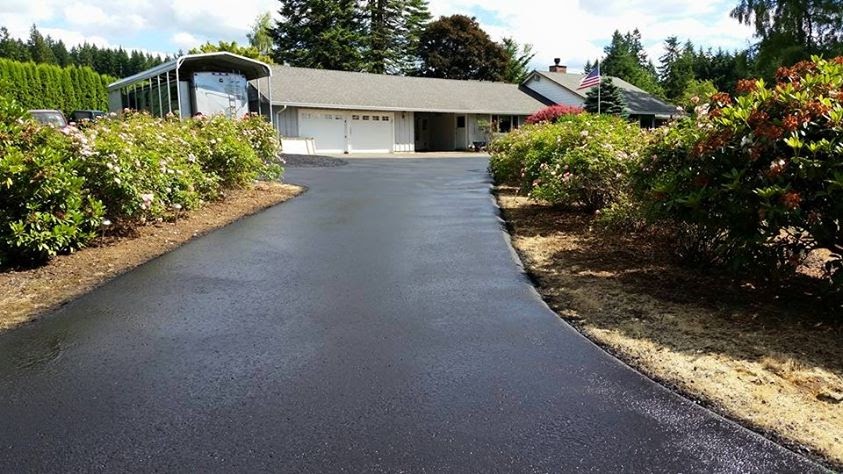Chip Seal vs Sealcoat: Understanding Your Asphalt Options
When it’s time to protect or refresh your asphalt pavement, two methods often come up: chip seal and sealcoat. Both are smart ways to make your driveway, parking lot, or road last longer, but they’re not the same. They differ in how they’re applied, what they look like, and how much protection they offer. Let’s dive into the details so you can pick the right one for your needs.
Sealcoat: The Protective Shield
Sealcoat is like putting a tough, protective coat of paint on your asphalt. It’s a liquid blend made from asphalt emulsion, water, mineral fillers, and some special additives to boost its strength. We apply it by spraying or brushing it over the pavement, letting it dry into a smooth, dark, shiny surface. This black finish not only looks sharp but also acts like a barrier against the elements. It keeps out water, blocks harmful UV rays from the sun, and stops oil spills or other chemicals from eating away at your asphalt.
Beyond protection, sealcoat can smooth things out. It fills in small cracks and imperfections, making the surface feel even and safe to walk or drive on. It’s a popular choice for places like business parking lots, apartment complexes, or home driveways where you want a clean, polished look without breaking the bank. Sealcoat isn’t about rebuilding—it’s about maintaining what you’ve got and keeping it looking good for years.
Chip Seal: The Rugged Upgrade
Chip seal, on the other hand, is a heavier-duty solution. It’s a two-step process that starts with spreading a thin layer of liquid asphalt over the pavement. Right after, we sprinkle small, crushed rocks—called aggregate—on top and use rollers to press them into place. Once it sets, you’re left with a rough, textured surface that’s tough as nails. This gritty finish isn’t just for show—it gives tires extra grip, which is perfect for slippery or high-traffic spots.
The goal of chip seal is durability. It’s designed to stand up to heavy use, like delivery trucks rumbling over a parking lot or cars speeding down a rural highway. It also holds strong against Oregon’s wild weather—think freezing winters, blazing summers, and endless rain. Chip seal doesn’t just protect; it can fix up older, worn-out pavement, adding years to its life. You’ll see it on country roads, farm driveways, or anywhere that needs a surface that won’t crack under pressure.
Chip Seal vs Sealcoat: Breaking It Down
So, what’s the real difference in chip seal vs sealcoat? It comes down to purpose and style. Sealcoat is your go-to for a quick, affordable refresh. It seals up your asphalt, hides small flaws, and leaves a sleek, black look that’s easy on the eyes—ideal for areas where appearance matters, like storefronts or suburban homes. It’s less about adding strength and more about keeping what’s there in good shape.
Chip seal, though, is built for the long haul. Those rocks locked into the asphalt create a sturdy, no-slip surface that can take a beating. It’s less about looking pretty and more about performance—think rugged roads or busy lots that need to handle constant wear. While sealcoat might need a touch-up every few years, chip seal can go longer before it needs attention, making it a solid pick for tougher jobs.
Which One’s Right for You?
Both sealcoat and chip seal save you money by preventing bigger repairs down the road. Sealcoat is simpler and faster, perfect if you just need to spruce up a decent surface. Chip seal takes more effort but pays off with extra toughness, especially in rough conditions. Whether you’re paving a quiet driveway or a bustling commercial space, the choice hinges on what you value: a smooth, pretty finish or a gritty, long-lasting fix.
Still unsure? We get it—pavement choices can feel tricky. Give us a shout, and we’ll walk you through it, tailoring the plan to your spot and your budget. Let’s make your asphalt work for you!



